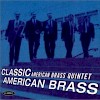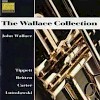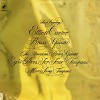Brass Quintet for 2 trumpets, horn, tenor trombone, and bass trombone
Recordings (3)
- Summit DCD 275 (2000)The American Brass Quintet: Raymond Mase, trumpet; Kevin Cobb, trumpet; David Wakefield, horn; Michael Powell, trombone; John D. Rojak, trombone


